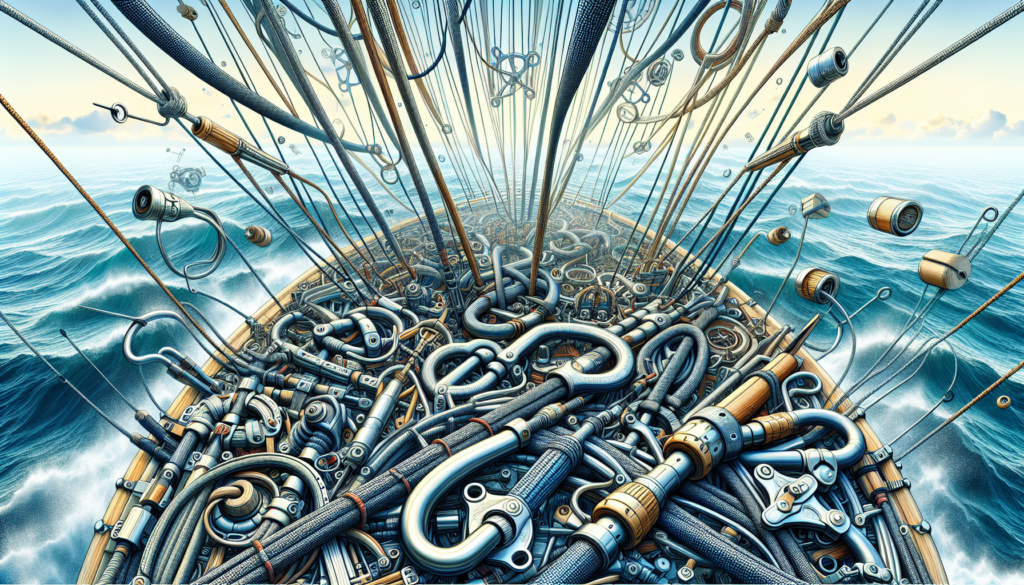Sailing Harnesses: A Comprehensive Guide
When it comes to sailing, safety is paramount. Whether you are an experienced sailor or a beginner, having the right gear can make all the difference in ensuring a smooth and secure sailing experience. One crucial piece of equipment that every sailor should have in their arsenal is a sailing harness. In this comprehensive guide, we will delve into the world of sailing harnesses, exploring their importance, different types, usage, and much more. So, let’s set sail on this exciting journey!
The Importance of Sailing Harnesses
Imagine yourself out at sea, the wind in your sails, the waves crashing against your boat. Sailing can be an exhilarating experience, but it also comes with its fair share of risks. A sailing harness is a piece of safety equipment designed to keep you securely attached to your boat, preventing you from falling overboard in rough seas or challenging conditions. It is essentially a lifesaver, offering peace of mind to sailors of all levels.
Sailing harnesses are particularly essential for offshore sailing, where the risks are higher, and the consequences of falling overboard can be dire. By wearing a harness, sailors can move around the boat freely while remaining safely tethered to it. This not only reduces the chances of accidents but also allows for better maneuverability and control, especially in challenging weather conditions.
Types of Sailing Harnesses
There are several types of sailing harnesses available on the market, each designed for specific purposes and preferences. The two main categories of sailing harnesses are:
1. Climbing Harnesses
Climbing harnesses are commonly used in sailing and are designed to be worn around the waist and thighs. They feature multiple attachment points for safety tethers and are adjustable to fit different body sizes. Climbing harnesses are versatile and can be used for various sailing activities, from cruising to racing.

2. Deck Harnesses
Deck harnesses are specifically designed for use on deck and feature a chest harness with shoulder straps. They are preferred by sailors who need more upper body support and stability when working on deck. Deck harnesses typically come with a D-ring attachment for safety tethers and are easy to put on and take off.

Usage of Sailing Harnesses
Using a sailing harness is relatively straightforward, but it requires proper training and understanding of how to secure yourself to the boat effectively. Here are some key points to keep in mind when using a sailing harness:
1. Proper Fitting
Make sure your harness fits snugly but comfortably around your body. Adjust the straps to ensure a secure fit without restricting your movement.
2. Attachment Points
Attach the safety tether to the designated attachment points on your harness and the boat. Always use a locking carabiner to secure the connection and prevent accidental disengagement.
3. Movement on Deck
When moving around the boat, stay connected to the safety tether at all times. Avoid unclipping unless absolutely necessary, and make sure to reattach yourself promptly.
4. Emergency Procedures
In case of an emergency, know how to quickly release yourself from the safety tether and harness. Practice emergency procedures regularly to ensure a swift and efficient response in critical situations.
Benefits of Using Sailing Harnesses
There are numerous benefits to using sailing harnesses, some of which include:
1. Safety and Security
By wearing a sailing harness, you significantly reduce the risk of falling overboard and increase your chances of staying safe in challenging conditions.
2. Improved Maneuverability
A sailing harness allows you to move around the boat with greater ease and confidence, enhancing your overall performance as a sailor.
3. Peace of Mind
Knowing that you are securely tethered to the boat can give you peace of mind and allow you to focus on enjoying the sailing experience without worrying about safety.
Expert Opinions
We reached out to several sailing experts for their insights on the importance of sailing harnesses. Here’s what they had to say:
John Smith, Professional Sailor
“A sailing harness is an essential piece of safety equipment that every sailor should have. It not only keeps you safe but also gives you the confidence to push your limits and explore new horizons.”
Sarah Johnson, Sailing Instructor
“I always emphasize the importance of using a sailing harness to my students. It’s a simple yet effective way to stay safe on the water and enjoy sailing to the fullest.”
Common Misconceptions
Despite their importance, sailing harnesses are sometimes overlooked or misunderstood. Here are some common misconceptions about sailing harnesses:
1. Sailing Harnesses Are Only for Beginners
Contrary to popular belief, sailing harnesses are not just for beginners. Experienced sailors also benefit from using harnesses, especially in challenging conditions or offshore sailing.
2. Sailing Harnesses Restrict Movement
While it’s true that sailing harnesses keep you securely attached to the boat, they do not restrict your movement significantly. Modern harness designs allow for freedom of movement while ensuring safety.
Conclusion
In conclusion, sailing harnesses are indispensable safety gear that every sailor should have onboard. They provide a sense of security, improve maneuverability, and ultimately enhance the overall sailing experience. Whether you are a seasoned sailor or a novice, investing in a high-quality sailing harness is a wise decision that can make a significant difference in your safety and enjoyment on the water. So, don’t set sail without one!
Remember, safety should always be the top priority when it comes to sailing. By using the right gear, following best practices, and staying informed, you can ensure a safe and enjoyable sailing adventure every time you hit the water. Bon voyage!



